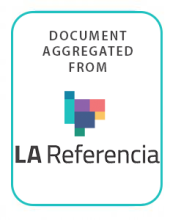Land Library Search
Through our robust search engine, you can search for any item of the over 73,000 highly curated resources in the Land Library.
If you would like to find an overview of what is possible, feel free to peruse the Search Guide.
/ library resources
Showing items 1 through 9 of 51."Kenya’s economy is relatively diverse, with both agricultural and industrial potential. However, the economy has performed poorly over the last decade, and poverty and inequality have risen.
At the end of Apartheid, approximately 82 million hectares of commercial farmland (86% of total agricultural land, or 68% of the total surface area) was in the hands of the white minority (10.9% of the population), and concentrated in the hands of approximately 60,000 owners (Levin
Aimed at young people, this booklet presents key points from the 2006 Human Development Report on water scarcity and its effects on human life.
Rising poverty in rural Uganda is linked to increasing landlessness, as the latter drives land degradation and reduces agricultural productivity. This paper examines the complex relationship between owning land and poverty.
Poverty in the Near East and North Africa region (NENA) is mainly a rural phenomenon. Almost half (48%) the area’s population lives in rural areas.
This paper analyses the livelihoods of the Borana pastoral communities of Southern Oromiya in Ethiopia. It aims to inform policy makers, donors, and development practitioners about the best strategies for protecting and promoting sustainable livelihoods in the region.
Dhaka is the fastest growing mega-city in the world, attracting an estimated 300,000 to 400,000 mostly poor migrants a year. This paper argues that urgent measures are required to address the vital needs of the city's rapidly growing urban poor.
The Hima is a traditional system of resource tenure that has been practiced for more than 1400 years in the Arabian Peninsular. With the numerous deteriorations that came and halted advancement in the Arab world, and at times for different reasons, the Hima also declined.
El ordenamiento territorial y la lucha contra la desertificación constituyen dos vertientes del conocimiento con gran entidad en sí mismos y no es frecuente encontrar una articulación entre sus respectivos enfoques y perspectivas ni tampoco propuestas operativas que sinergicen sus resultados.




